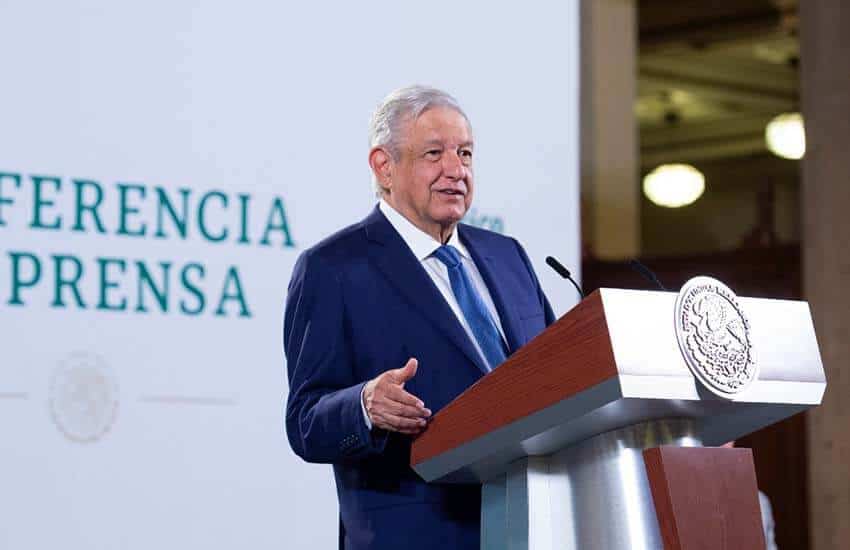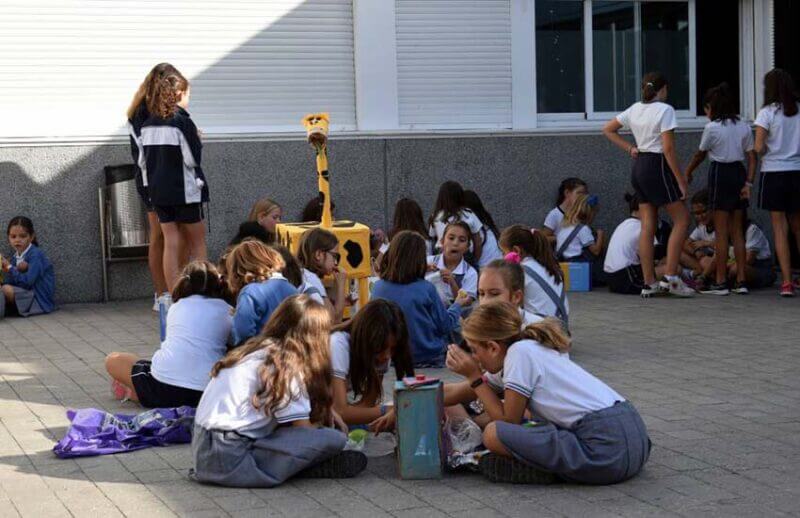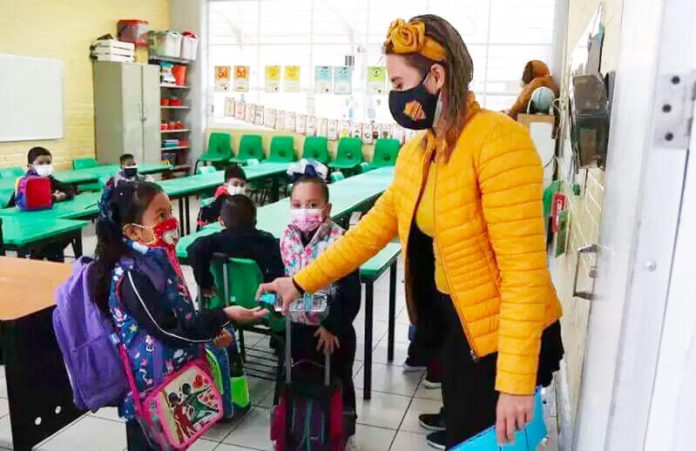Schools across Mexico reopened on Monday 17 months after closing due to the onset of the coronavirus pandemic.
More than 25 million pre-school, primary school and middle school students were due to return to in-person classes but the actual number of returnees was expected to be lower because attendance is voluntary and online learning will continue for the foreseeable future in many states. Approximately 2 million teachers and other educational and administrative staff were also set to return to school.
“It’s a very important day because girls, boys and adolescents are returning to public and private schools. The school year is starting, a great effort has been made,” President López Obrador, a fierce advocate for the reopening of schools, told reporters at his morning press conference.
He predicted that the majority of students would return to in-person classes because “school is irreplaceable” – a place not just of learning but also a center of conviviencia (coexistence or togetherness).
“It has to do with the feelings that boys and girls express to each other,” the president said.

The government forged ahead with the plan to reopen schools on Monday despite Mexico being amidst a delta variant-driven third wave, with daily case numbers currently higher than at any other time of the pandemic.
The Ministry of Public Education (SEP) drew up a range of guidelines aimed at ensuring a safe return to the classroom — among which are social distancing, wearing face masks and frequent handwashing – but it remains to be seen whether students will follow them and school outbreaks will be avoided.
Increasing the likelihood of transmission is the fact that the highly contagious delta strain spreads more readily among children than earlier variants of the virus.
The only states where schools were not scheduled to reopen on Monday were Michoacán – where authorities believe the risk is currently too high — Sinaloa and Baja California Sur. Authorities in the latter two states postponed the resumption of classes due to the passing of Hurricane Nora, which brought heavy rain and flooding to several states over the weekend.
Some teachers were also not expected to return to the classroom on Monday. The CNTE teachers union said that its members wouldn’t be offering in-person classes in Mexico City, Guerrero, Chiapas and Oaxaca because of the risk of infection.
Another obstacle to a smooth reopening is that almost one-quarter of public schools don’t have running water, according to the National Parents Union.

Education Minister Delfina Gómez conceded last Friday that the number of schools lacking the basic conditions required to safely welcome back students and teachers was unknown.
Francisco Landero, an education expert, told the newspaper El Universal that students of different schools will face different situations upon their return to in-person learning. Parents have to make a decision about whether to send their children back to school or not “in the face of the lack of an orderly, systematic and well-thought-out strategy by the federal government,” he said.
Landero noted that federal authorities haven’t contemplated the use of COVID-19 testing for students and teachers as part of their strategy to avoid the spread of the virus. However, some state governments, including those in Jalisco and Querétaro, are planning to do so.
“What is expected is that a large percentage of schools will open on Monday to comply with the presidential mandate, but a lot will move to the hybrid model in about two weeks,” Landero said, referring to a mix of in-person and online classes.
“… The protocols that SEP established don’t guarantee there won’t be infections,” said Rosa María García Jiménez, an education academic at La Salle University in Mexico City.
“Working with children and young people is always a risk,” she said, adding that teachers will not only have to worry about teaching but also monitor students to ensure they don’t hug each other.
The federal government previously said that schools could only reopen in states that are low risk green on the coronavirus stoplight map, a condition currently met by just one state – Chiapas. However, the government recently changed its position, concluding that the benefits of reopening schools outweighed the risks.
“Starting classes is very important. We celebrate that it’s happening because many [students] have been through very difficult … situations. But we’re now heading toward normality and we have a lot of faith,” the president said.
“… I had to wake Jesús up at six in the morning to go to school,” he added, referring to his 14-year-old son.
With reports from El País and El Universal
